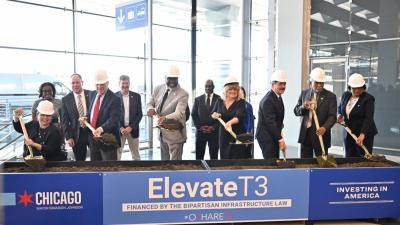SAN FRANCISCO (AP) A scenic stretch of Highway 101 that wends through a majestic stand of ancient redwoods in Richardson Grove State Park is called the gateway to Humboldt County — but officials and local businesses say this narrow roadway is actually a barrier to the region’s economic growth.
To remove this barrier, the California Department of Transportation in January plans to remove dozens of trees and realign a section of the highway so it can be added to a national system of roads that cater to large, so-called Surface Transportation Assistance Act, or STAA, trucks which now cannot legally use the road. This one-mile stretch is the only part of Highway 101 from San Francisco to the Oregon border where the large semi-trucks used to ferry goods around the nation aren’t permitted, except by a special exemption.
But a vocal group of North Coast residents on June 30 asked a federal judge in San Francisco to stop Caltrans in the latest shot fired in the battle over the grove project.
The group said the road work will damage the root systems of the area’s towering, ancient redwoods — including the world’s ninth tallest — and open up the area to more semi-truck traffic, pollution and development.
However, they see the fight as not just about trees, but about preservation of one of the California coast’s last undeveloped areas where a small town vibe persists.
“Not everybody goes crazy for the trees, but it’s more than that, [Caltrans and county officials] are not considering the overall aspect of what’s being contemplated here,” said Barbara Kennedy, an activist who has helped organize opposition. Kennedy argues that investment in diesel trucking is an old way of thinking in an era when fuel prices are climbing.
“It is time to begin the end of our dependence on diesel trucking and begin to divert our resources to other modes of goods movement that will be more economical and less damaging to the environment,” she said.
When Humboldt County economic development coordinator Jacqueline Debets talks to local businesses — artisan cheese-makers, microbrewers, machine parts manufacturers — concern No. 1 was shipping costs. The North Coast has no major shipping port, no major rail lines and a small airport.
Truck transport is the only way to get large quantities of goods and services in and out of a very remote area, and the three main roadways into the area had stretches too narrow for STAA trucks, which move much of the nation’s goods. Currently a few STAA trucks have exemptions, but Caltrans said two travelling in opposite directions cannot make it safely through.
“These are the same size trucks that run all over the country delivering goods, and they can’t come here,” said Debets. “It puts us at a severe competitive disadvantage and it costs more to import products.”
As Caltrans moves forward with its plans, the protests have become more raucous and vocal — during one protest in February outside the Caltrans office in Eureka, an officer had hot coffee thrown on him and another was hit by a metal mug, police said. Twelve protesters were arrested. Dozens of protesters recently marched on the Caltrans offices in Sacramento, delivering a petition signed by 11,000 citizens opposed to the project.
Much of the furor over the Richardson Grove project has revolved around the construction’s effects on the ancient redwoods. Caltrans said it will remove 54 trees, with only six redwoods. The agency had originally said it would need to cut down 87 trees, but revised that after public outcry.
“We had a lot of public comment from people saying ’We love the grove, we love the trees,’ and we really worked to bring those numbers down in this final environmental document,” said Julie East, a Caltrans public information officer in Eureka, Calif.
Still, critics contend the trees targeted for removal are not the problem and that the construction itself will damage the fragile root systems of the ancient redwoods nearby. Caltrans said it is using an air-powered excavator to remove dirt from areas where the new roadway or shoulder will be, and will only cut roots two inches or less in size to minimize damage.
Joe McBride, a University of California, Berkeley forestry professor who studied the site and Caltrans’ plans, said in a court document filed in support of the project’s opponents that Caltrans’ arborists had not accurately stated the project’s potential effects on the old-growth redwoods. McBride’s analysis concluded that dozens more trees would die as a result of the work, and that the root systems of seven ancient redwoods would be negatively impacted.
“Substantial irreparable damage would occur to the trees in the project area as a result of the proposed project ... [which] would, in turn, cause negative impacts to the overall health of the forest in the vicinity of the project area,” McBride wrote.
U.S. District Court Judge William Alsup listened to arguments from both sides on June 30 in San Francisco, and appeared skeptical that damage to one segment of the trees’ roots would kill them.
“I don’t buy the idea that if you take one tiny little root [out] it’s going to hurt the whole tree,” Alsup said.
Plaintiffs’ attorney Philip Gregory, holding a clump of tiny redwood tree roots in his hand, told the judge that redwoods have a complex, shallow root system the tall trees need to feed and anchor into the ground. He said damage to a section of these roots can affect the entire system.
As for fears that once the road is realigned, a convoy of massive trucks and developers will descend on this remote area of California, Humboldt County’s Debets said the concerns are overblown.
“I’m a fifth generation Humboldt County native, I love that it’s small here,” she said. “And I also know that after this project’s done no one’s going to notice a change.
Today's top stories















